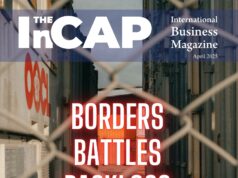The Psychology of Consumer Behavior: Decoding Decision-Making for Enhanced Marketing Strategies.
In the ever-evolving landscape of commerce, understanding the psychology of consumer behavior has become paramount for businesses aiming to create impactful marketing campaigns and deliver exceptional customer experiences. Delving into the intricacies of consumer decision-making processes, backed by data and real-world examples, can provide valuable insights for crafting effective strategies that resonate with customers on a deeper level.
1. The Cognitive Framework of Consumer Decision-Making
Consumer decision-making is a complex process driven by various cognitive and emotional factors. One widely recognized model is the Consumer Decision-Making Process, which consists of five stages: problem recognition, information search, evaluation of alternatives, purchase decision, and post-purchase evaluation. Each stage is influenced by psychological triggers that marketers can tap into.
Example: Consider the smartphone market. During the information search stage, consumers actively seek reviews, features, and comparisons. Apple capitalized on this by presenting detailed specs and highlighting user experiences to influence evaluations and purchasing decisions.
2. The Power of Perception and Persuasion
Perception shapes how consumers perceive brands, products, and services. The mere exposure effect suggests that familiarity breeds preference. Repetition and consistent branding can create positive associations in consumers’ minds.
Data: According to a study by Nielsen, it takes an average of 6-8 touchpoints to convert a lead into a customer. This underscores the importance of repeated exposure in influencing buying decisions.
3. Anchoring and Social Proof
Anchoring refers to the phenomenon where consumers rely heavily on the first piece of information they encounter when making decisions. Marketers can strategically set initial price points or values to guide consumers’ perceptions of value.
Example: Amazon uses anchoring by displaying the original price crossed out next to the current discounted price, influencing consumers to perceive a greater value.
Social proof is another psychological trigger, where individuals are more likely to make decisions based on the actions of others. Online reviews, testimonials, and user-generated content serve as powerful sources of social proof.
Data: A study by BrightLocal found that 88% of consumers trust online reviews as much as personal recommendations, highlighting the significant influence of social proof on purchasing decisions.
4. The Paradox of Choice and Decision Fatigue
While choices are often considered empowering, an excessive number of options can lead to choice overload and decision fatigue. Consumers faced with too many options might become overwhelmed and hesitant to make decisions.
Example: In a famous study by Sheena Iyengar and Mark Lepper, a display with 24 flavors of jam attracted more attention than one with only 6 flavors. However, the latter resulted in significantly more purchases, indicating that fewer options can lead to better decision-making.
5. Emotional Branding and Customer Loyalty
Emotions play a pivotal role in consumer decision-making. Brands that evoke positive emotions can create strong emotional bonds with consumers, leading to increased loyalty and repeat business.
Data: According to a report by Motista, emotionally connected customers have a 306% higher lifetime value than satisfied customers. This underscores the importance of fostering emotional connections through branding and marketing efforts.
6. The Urgency of FOMO and Scarcity
The Fear of Missing Out (FOMO) and the principle of scarcity leverage consumers’ fear of losing out on opportunities. Limited-time offers and scarce products can trigger a sense of urgency, prompting quicker decision-making.
Example: Flash sale events like Black Friday capitalize on FOMO and scarcity, driving consumers to make rapid purchase decisions to secure deals.
Remember!
Understanding the intricate interplay between psychology and consumer behavior empowers businesses to design more effective marketing campaigns and elevate customer experiences. By harnessing cognitive biases, emotional triggers, and social dynamics, marketers can create strategies that resonate deeply with consumers, ultimately leading to increased conversions, customer loyalty, and brand success.
In a rapidly evolving marketplace, staying attuned to the psychology of consumer behavior is no longer a luxury; it’s a necessity for businesses aiming to thrive in an increasingly competitive landscape. By combining data-driven insights with a nuanced understanding of consumer psychology, companies can forge more meaningful connections with their target audience, leading to lasting success.
Here are some links for our readers with valuable perspectives from reputable sources that support and expand on the ideas discussed in this article. Explore and enrich yourself.
- Consumer Behavior and Decision-Making:
- Harvard Business Review – Consumer Behavior – Offers a collection of articles discussing consumer behavior and decision-making strategies.
- Psychological Triggers in Marketing:
- Psychology Today – The Psychology of Marketing – Explores the psychology behind consumer behavior and how it influences marketing strategies.
- The Power of Emotional Branding:
- Forbes – Emotional Branding – Discusses the impact of emotional branding on consumer loyalty and business success.
- Social Proof and Trust:
- Influence at Work – Social Proof – Explores the concept of social proof and how it influences consumer decision-making.
- The Paradox of Choice and Decision Fatigue:
- TED Talk – The Paradox of Choice – A TED Talk by Barry Schwartz discusses how an abundance of choices can lead to decision-making challenges.
- FOMO and Scarcity Strategies:
- HubSpot – Fear of Missing Out in Marketing – Explores how FOMO and scarcity tactics can be effectively used in marketing campaigns.
Read more from our Economy section.




















